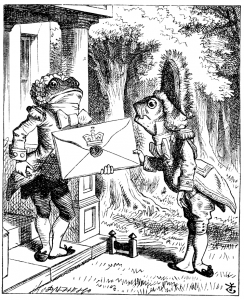Some advice from two hundred years ago: Featuring Benjamin Franklin’s “bold and arduous project of arriving at moral perfection,” along with a Whackadoodle twist. If you have entered this story in the middle, click here for the table of contents.
________
“What do we tackle next?” I parroted back, rapping my knuckles on the table. “I should have thought that would be obvious. We must imitate Ben Franklin’s ‘bold and arduous project of arriving at moral perfection.‘”
“Oh, yeah, right, why wouldn’t that be obvious?” she smirked.
Ignoring her, I added, “I am of course referring to Ben Franklin’s ‘13 Virtues’ path to personal perfection, which he explains in his 1791 book, The Autobiography of Benjamin Franklin, published in 1791.“
“Is that the one where he picked thirteen virtues that he wanted to build into his character; so he focused on one virtue each week until he’d gone through all thirteen, then he’d start the cycle again?”
“Yes,” I agreed. “Ben suggested ‘giving strict‘ attention to one virtue at a time, leaving all of the others to ‘their ordinary chance.’ He actually mentions it as a sort of challenge to his readers, suggesting that they imitate his example. Hang on, can you pass me your phone?” I asked suddenly. “I’d like to show you how David G. Allan explains it.”
A few searches later, and she was reading out loud:
Franklin started by taking a critical look at his behavior, and he found that too often he traveled down unvirtuous roads that “natural inclination, custom or company might lead me into,” as he put it.
He fell short of his ideal in more than a dozen areas of his life, he concluded. He ate and drank too much. He talked too much, especially about himself. He spent more money than he should. He didn’t finish all his goals. And so on. In other words, he wrestled with the very same human urges, flaws and proclivities that now fuel our New Year’s resolutions and the ever-booming market of self-help books.
Then he considered various virtues that, if mastered, would counteract his unwanted behavior. His list of 13: Temperance, Silence, Order, Resolution, Frugality, Industry, Sincerity, Justice, Moderation, Cleanliness, Tranquility, Chastity and Humility.
Thirteen wasn’t a nod to the original colonies, nor was it random. He chose 13 because that number fits neatly into a calendar. Multiply it by four, and you get 52, the number of weeks in a year.
Franklin would take a single virtue at a time, work on it for a week and then move on to the next. Trying to fix everything that’s wrong with you all at once is overwhelming, he decided. The virtuous path needs to be broken down to give each area some concentrated time of intention and effort. Every 13 weeks, the cycle repeats itself.
He accounted for his progress on a chart and shared his scheme with others. Modern social science has since proved that tracking and accountability are two key components of successful habit formation. He was also hundreds of years ahead of the curve for the fun and addictive trend of gamification.
I came across 13 Virtues in college. It was mentioned in a couple of paragraphs in the middle of a magazine article about Franklin, but reading it was like that key tied to the end of Franklin’s kite in the storm: It charged a sudden desire to try the method myself.
By David G. Allan, CNN
Published 5:03 AM EST, Thu March 1, 2018
She look up as she finished. “So you decided to imitate Ben Franklin, but instead of thirteen virtues to build your character, you picked fourteen rules to sharpen your mind.”
“Ben called his practice a bold and arduous project of arriving at moral perfection. I suppose you could call mine a bold and arduous project for navigating life.“
“So next week, we start the cycle again?”
“I’ve been cycling through my rules for the past,” I counted out the years on my fingers. “Good Lord, has it really been seventeen years. Amazing that even now, I can discover some new nuance in each cycle.”
“And now we get to cycle together,” she laughed. “I’ll gain from your nuance.”
“While I’ll gain from your perspective.”
*********
And so we return to the beginning, with a better understanding of where we are.
********
_________
If you you enjoyed this post, please leave a comment below. It helps our algorithm.
It would also be great if you shared this post. It also helps our algorithm.
If you would like to join Lynn’s mailing list, or ask a Dear Navigator question click here

You can reach Lynn Marie Sager at
DearNavigator@gmail.com
Author:
- Navigating Life in a Whackadoodle World
- Finding Sense in a Whackadoodle World
- Teaching Logic in a Whackadoodle World
- Navigating Life Through Turbulent Tides
- A River Worth Riding: Fourteen Rules for Navigating Life


So at 92, I cycle back to the beginning; Looking for the causes of those things, good and bad, that affect my life.
In the 14th episode you bring it all together. You show how the rules reinforce each other.
Life is an ecosystem where, if you ignore a rule, your life can fall appart. Your boat can sink.